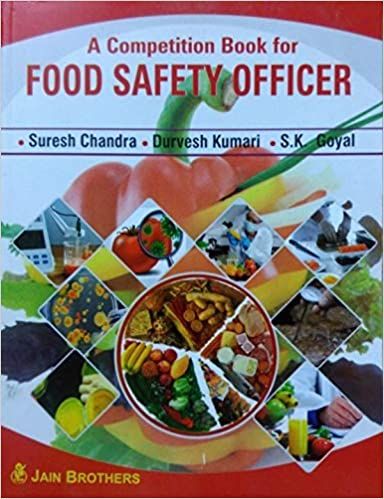Hygiene, sanitation and safety of quantity food production
1. Write short notes on personal hygiene.
Personnel hygiene refers to the general health, personal grooming and working habits of all people who work in a catering establishment. While it is important to adopt regular procedures for maintaining the hygiene and sanitation of the environment and the processes through which food is handled in any establishment, all these efforts would be in vain if the staff handling the food are the cause of the contamination.
To safeguard this a few general rules will act as a guide, which all persons handling food should follow strictly:
All staff reporting on duty must be fresh, well groomed and clean; not half asleep, or unkempt in appearance.
They must change into fresh, clean overalls and those working in kitchens and service areas should wear head coverings to protect food from loose hair falling into it.
Hands should be washed well with soap before starting work or after using toilets during work.
All cuts must be covered with waterproof dressings.
Spitting or smoking in the kitchen or service areas should be strictly prohibited.
When sneezing, while handling food, the face should be turned away from food and a handkerchief or tissue used.
Leaning or sitting on the work table is an objectionable habit.
All peels should be thrown into a container and not kept lying around on the work table near the prepared food.
All the kitchen cloths and equipment must be washed in hot water preferably at 43°C to 45°C with a suitable detergent. A grease layer on the surface of the water means the detergent is not enough to be effective. Ensure that all stains are removed from equipment and cloths.
All crockery and cutlery should preferably be immersed in hot-water at 77 °C for over two minutes, and then air dried, to prevent contact with clothes which are often used for wiping these dry.
Food should be kept covered and maintained either ice-cold or piping hot.
2. Explain about the safety procedures in a food service establishment?
The safety procedures to be followed in a food service establishment include -
The controls for all kinds of fuel supplies must be located within easy reach.
Spaces where fuel is loaded as gas cylinders are stored, need to be guarded and isolated from possible sources of ignition and short circuit.
Mark all broken or chipped glassware to indicate that they are to be put out of use.
Oven pads must be provided for lifting food out of hot ovens or from the top of hot ranges.
Regular maintenance procedures must be set up for upkeep of premises and equipment to keep them in safe working order.
Every work area should contain aids which remind people of safety such as posters communicating right and wrong working methods. Ex.: "Now wash your hands" written clearly at entrances to kitchens and service areas.
Install fire extinguishers and alarms at convenient points in the establishment in case of an emergency.
3. List the reasons for accidents in a food service establishment.
The reasons for accidents in a food service establishment include –
Structural inadequacies
Improper placement of equipment in spaces.
Improper working habits.
Nature and behaviour of people at work.
Improper selection, installation, maintenance and storage of equipment
4. What are the methods to control infestations in a restaurant?
The infestation of flies can be controlled by used of equipments like Pest-O-Flash that attracts the insects and flies and kill them. For rodent infestation, poisons like Warfarin can be used. Lindane can be used in the white washings as surface insect repellant. Whatever the nature of infestation, two factors to be remembered in eradication are –
The process must not leave a single surviour.
No food handler should be allowed to used the insecticide sprays or prepare the baits.
5. Describe about the need for ventilation in a catering establishment.
Many people are working together, handling, cooking and consuming food; the atmosphere gets heated up and polluted with CO2 due to respiration and is conducive for growth of microorganisms. In service areas especially, there is always overcrowding at peak service times.
Ventilation takes on a very important role in clearing the hot air and bringing down the temperature as well as the CO2 content. All kitchens must be provided with exhaust fans and extraction hoods above cooking ranges to remove steam and organic impurities. In service areas while overcrowding needs to be avoided, the provision of ceiling fans to push out the warm air, and enough windows and ventilators to replace it, are important to hygiene. Windows and ventilators should be hinged to allow air an upward direction.
6. What is “Holding of foods”?
The ‘danger zones’ in holding foods are 10 to 62 oC as micro organisms can grow easily at these temperatures. Hence the food has to be held above 63 oC and below 3 oC to maintain the quality and safety of prepared foods.








